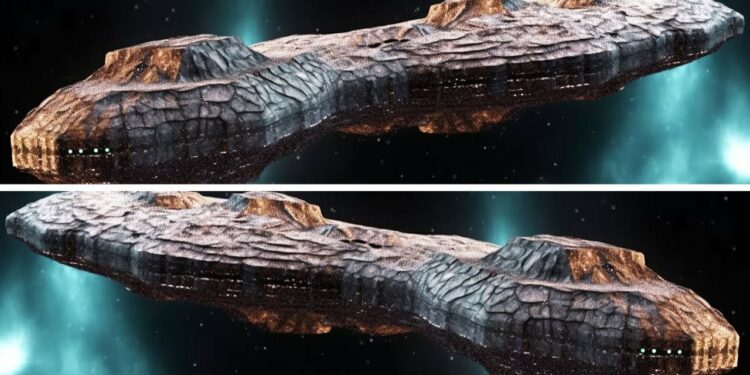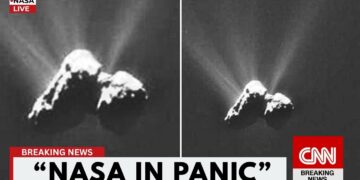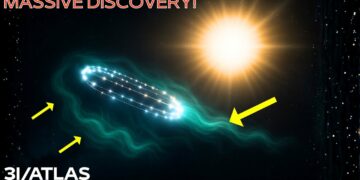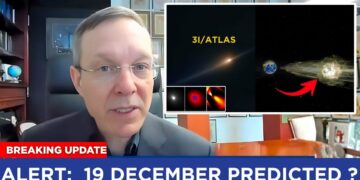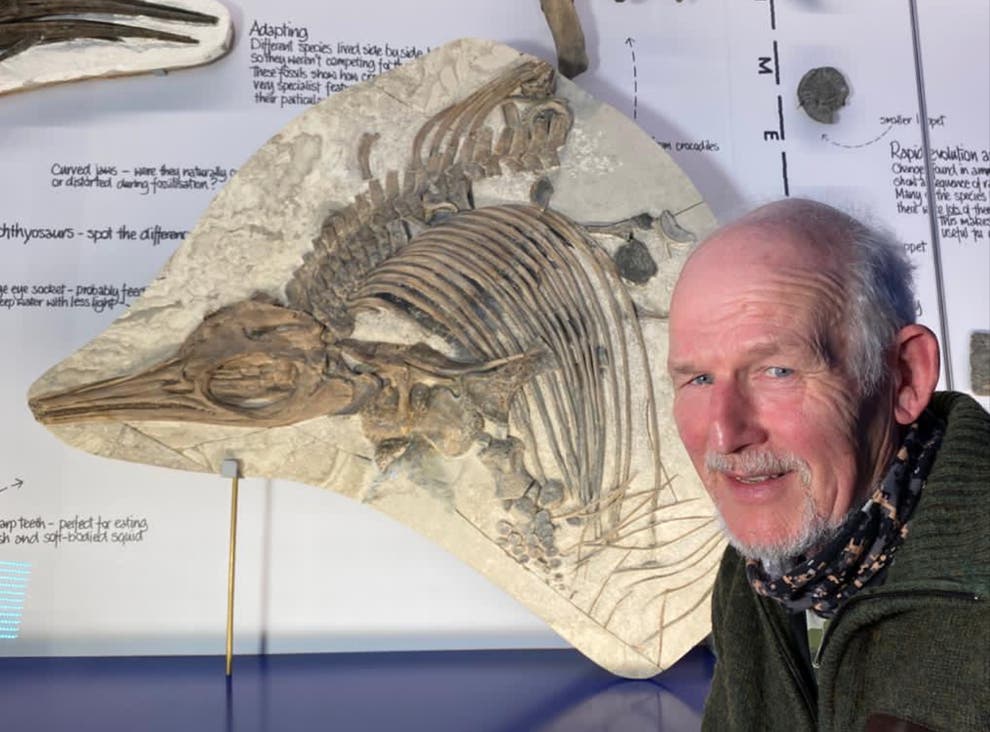For years, the vast emptiness between stars has guarded its mysteries—a realm beyond reach, light, or understanding. Now, that silence has been shattered once more. Not by chance or mishap, but by something intentional, something approaching: a comet, but not an ordinary one. This comet is unique—moving faster than any interstellar object we’ve ever observed. It’s massive, radiant, red, and ancient. Alarmingly, it’s on a direct course toward the heart of our solar system. The James Webb Space Telescope, alongside a network of ground-based observatories, has raised the alert. This is no mere cosmic rock. It’s the third object in history to breach the veil of interstellar space and enter our domain. Its shape, composition, and impossible trajectory carry a message we may not be ready to hear—a warning about the universe itself.
In 2017, ‘Oumuamua streaked through our skies, captivating the world. Then, in 2019, Boris arrived—icy, fast, and active. Two interstellar visitors, unexpected and unexplained. After that, the cosmos fell silent for six years, with nothing piercing our solar bubble. Until July, when the ATLAS survey telescope in Chile detected an anomaly: an object racing through the Sagittarius constellation. Initially a faint blur, possibly a stray asteroid, further images revealed the truth. This was no local object. It was hyperbolic, on a one-way path from beyond our solar system. Named 3I/ATLAS—the third known interstellar object, the third trespasser—it triggered immediate concern. With an eccentricity of 6 and a velocity of 58 km/s, 3I/ATLAS is unlike anything we’ve seen. It’s not merely passing through; it’s slicing through our solar system with extraordinary speed and energy, a cosmic blade disrupting the fabric of solar equilibrium.
We know little about what brought it here or what it carries. The James Webb Space Telescope, though not designed for comet tracking, has joined other observatories in studying this anomaly. The data is unsettling: 3I/ATLAS is massive, 10 km wide—larger than ‘Oumuamua and Boris combined. It reflects a strange, redder-than-expected light spectrum, rich in carbon. Its brightness surged rapidly from late May to its discovery, and its faint but measurable tail stretches over 25,000 km. This is no dormant rock—it’s active, awake, and ancient. Velocity models suggest 3I/ATLAS is 3 to 11 billion years old, predating our solar system and Earth. It may have wandered the interstellar void before the first star in Orion formed. Why is it here now? What force propelled it across the galaxy at such speed and on such a precise trajectory?
Three interstellar objects in six years, after millennia of absence, can no longer be dismissed as coincidence. Scientists are questioning whether this marks the start of a new cycle or the continuation of an ancient pattern. Each object differs drastically: ‘Oumuamua was dense and rocky, tailless; Boris was volatile, spewing carbon monoxide; 3I/ATLAS is a hybrid—active yet restrained. All three approach from different angles, display unusual light curves, and challenge our understanding of cometary formation. These objects don’t just reveal their origins; they hint at our place in the galaxy. Their trajectories, compositions, and interactions with the Sun suggest that the space around us is more interconnected and dynamic than we imagined. The more we observe, the more it feels as though we are the ones being watched.
Where did 3I/ATLAS come from? Its hyperbolic path suggests an ancient ejection from a distant system, possibly a carbon-monoxide-rich red dwarf. Its deep red surface and volatile emissions point to extreme cold, found only in the outermost, slowest-forming regions of a solar system. Some researchers propose a more radical idea: could objects like 3I/ATLAS be artificial? Fragments of something larger, perhaps even manufactured—relics of ancient civilizations, signals we can’t decode, or structures we don’t recognize. There’s no proof, only patterns. The James Webb Space Telescope is watching as 3I/ATLAS swings past Mars, the Sun, and back into the unknown, offering a fleeting window to learn its secrets.
Closer tracking revealed more about its spin. Using precision instruments at Los Cumbres Observatory, astronomers analyzed its brightness over time, seeking rotational variability. The results were intriguing: 3I/ATLAS rotates every 29 hours, slow for its size and speed. Its light curve, with only 0.2 magnitudes of variation, indicates an unusually symmetrical surface or balanced structure—rare for comets, which are typically chaotic and irregular. Some speculate this symmetry suggests a deeply frozen, undisturbed surface, untouched by star systems for millions of years. Others question if it’s entirely natural. Compared to its predecessors, 3I/ATLAS is distinct: it spins slower than Boris, is smoother than ‘Oumuamua, and travels faster than both.
Telescopes scanning its surface searched for indirect signals—changes in magnetic fields, solar radiation, or charged particle density. Amid electromagnetic noise, a faint, persistent pulse emerged. Not a traditional signal, but a subtle fluctuation in the local magnetic environment, occurring as 3I/ATLAS shifted its angular position relative to the Sun. This could stem from its speed, emissions, or something else entirely—perhaps invisible particles, an ionized gas field, or even dark matter. The James Webb Space Telescope didn’t just observe 3I/ATLAS; it monitored how space around it changed, suggesting the object carries a memory of interstellar space.
The discovery of 3I/ATLAS prompted a reassessment of interstellar object frequency. Previously thought rare, their density is now estimated at 0.001 per cubic astronomical unit— staggeringly scarce. This rarity makes their recent appearances feel deliberate. Three objects in six years, each appearing as our observational tools matured, raises questions: cosmic coincidence or part of a larger galactic rhythm? Are these travelers, messengers, or monitors? 3I/ATLAS, with its precise timing, angled trajectory, and unprecedented speed, feels too perfect to be chance.
Unlike ‘Oumuamua and Boris, 3I/ATLAS arrives in 2025 with advanced tools and more questions. It’s red, massive, and accelerating on a hyperbolic escape route. For a brief moment, it’s close enough to study before vanishing forever. We don’t know its true origin or nature, but 3I/ATLAS is more than interstellar matter—it’s a message in motion, a fragment of a story spanning light-years and billions of years. In a cosmos of silence and distance, it’s a whisper from beyond, glowing red, spinning slowly, and crossing our system with uncanny precision. The James Webb Space Telescope captured its patterns, activity, and trajectory, revealing not a threat of collision but a deeper challenge to our understanding. What if these objects aren’t just rocks? What if they’re records, warnings, or glimpses of a greater truth?

